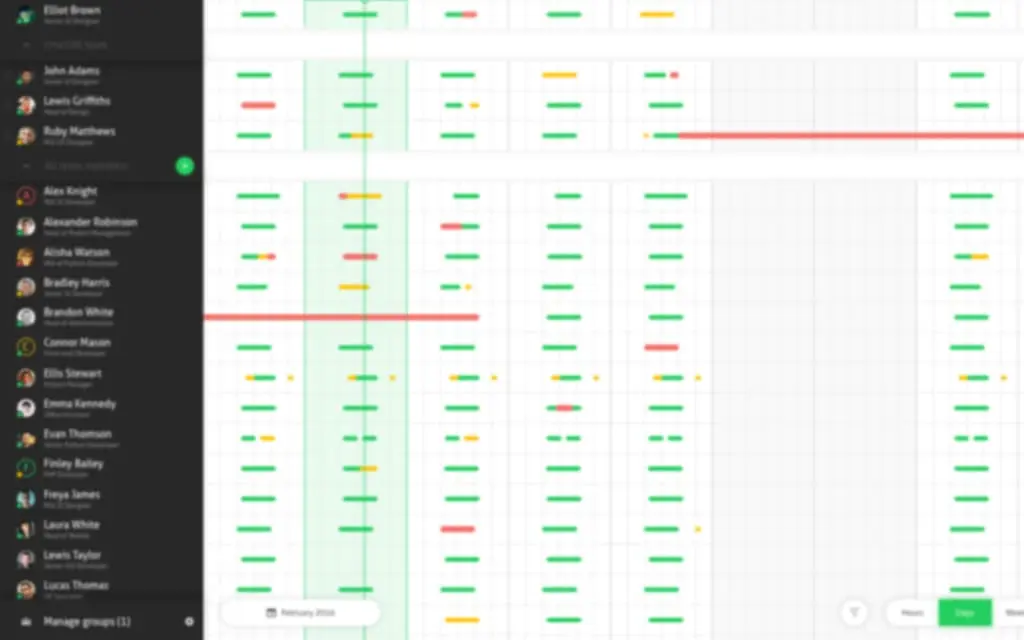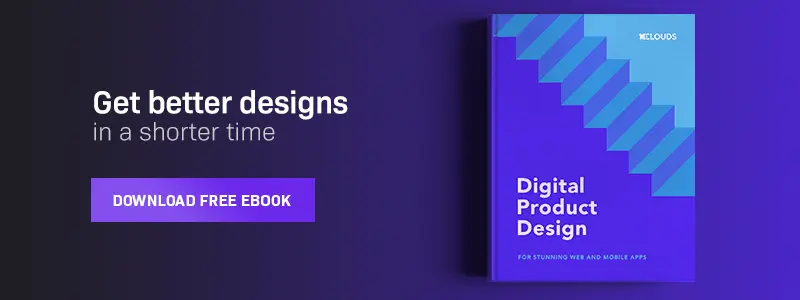
The following is a story of timeION, our product that we were developing internally within our software development agency. We share it so you can read and learn from our mistakes.
The circumstances of creating an idea for timeION were simple. More than 7 years ago, Michał Kłujszo and I started 10Clouds, a software development agency. As we grew, many of our employees were working not only in the office but also from home or even other countries. It was getting extremely hard to keep track of everyone’s availability. We ended up in a situation where we simply couldn’t stay up to date with hundreds of emails and Slack messages regarding employees’ working hours or time off requests.
In 2013, one of our project managers proposed to build a solution to handle that problem. She came up with an idea to create an app to which would address the issue and we could potentially sell it as a SaaS product to other companies. There must have been other teams that shared the same trouble as we were in.
The beginnings were optimistic
First, we looked around for ready-made software to understand what’s on the market. Back then, there were only a few products like that and frankly speaking, they didn’t meet our basic expectations. Things escalated quickly. I created a prototype over a sleepless weekend and implemented it in the company a week later. It was lean/agile product development at its finest. We started using the app right away and went on with improvements and updates.
The initial version could handle the exact specific case we had. No pagination, no edge cases handling. But it worked and essentially solved our problem.
After a while, with the casual support of other 10Clouds developers and numerous internal iterations, we ended up with a stable version, which we started converting to a product. The vision was to create a tool to efficiently communicate team members’ availability in modern distributed organisations.
The visual design was crude, but functionality-wise it did its job and was pleasant to use. We were on the right track. We even introduced a few other agencies to the product and they not only liked it but also used it.
Struggling with focus
We are a customer-focused organization. This affected timeION as a side project, without appropriate focus and making it a major personal bet. We wanted it to prove itself before we could shift more focus to it. As a result, we ended up with a chicken and egg situation.
We bootstrapped it on purpose from the beginning, no outside funding acquired. There was no investors or advisors on board who could push us into doing things more proactively. After the initial push, despite trying hard, we were unable to focus on quickly iterating timeION while the market was moving on.
Thinking “whatever works for us will work for the rest of the world just fine” will take you nowhere.
On the other hand, in 2017, 10Clouds has become a thriving company with more than about 100 employees. who knows what would happen if we neglected it in favor of timeION. Would we find ourselves in a better spot? We’ll never know.
In 2013, we had no idea how to vet products
10Clouds used to be a software development oriented company. Creating an in-house product was something completely new to us. At that time, we basically only knew how to deliver great code. We didn’t know how to vet products and how to push them into profitable territory.
We’ve never found our market fit, and we were not aware of it.
We got some compliments, people liked the product, said nice words about the aesthetics, used the free version, but the traction was never high enough, and the small good things that people said allowed us to cheat ourselves into believing that we should keep going. There is a great presentation about the process of finding a market fit by Peter Reinhardt from segment.com, really worth watching.
Back in 2013, we didn’t even know the term.
We fell in love with the product
Another mistake that we’ve made was falling in love with our own product. Thinking “whatever works for us will work for the rest of the world just fine” took us nowhere in the long run.
Love comes with a desire for perfectionism, which has nothing to do with building a sustainable business. You know what I’m talking about: “It’s not ready for launch, it’s still not perfect, we still need to fix X, Y, Z”. We started charging customers for timeION in late 2016, 3 years after starting the initial development. That is ridiculously long!
A breath of fresh air
10Clouds has changed a lot since 2013. We established our own UX, Marketing, Design, Management and Product teams. Through hiring new people and working with our clients we gained knowledge on how to perform lean canvas, user research, business models’ iterations and a lot of other elements required in proper product development.
It became apparent that what we were doing with timeION was ineffective. As a result, we decided to restructure according to the knowledge that we had acquired. We wanted to verify the idea in the existing market and make a choice: boost the financing or close the project down.
Love comes with a desire for perfectionism, which has nothing to do with building a sustainable business.
We gathered a team of product-dedicated professionals required to bring the new approach to life: UX and UI designers, product and marketing manager and, of course, developers. We came up with a timeline and exact budget figures. We knew that closing down a project like that would be a very difficult decision so those constraints were essential.
2016 was the year when timeION was reborn. We started with applying the product development knowledge to timeION. We conducted appropriate competitive analysis, agreed on a roadmap, defined the pricing etc.
Now collecting user feedback and trying to implement features our users wanted – that was a top priority. We wanted the app to be more adaptable for new users while avoiding complexity and bloat. We started to make an app for the outside world.
Final decision
The more people signed up for timeION, the more feedback we received. Customers were always “about to purchase” but they didn’t. This made us realise how much more work and time ahead we had to invest to find the market fit. Without any guarantee of success. With the current model of financing and a major growth plan on 10Clouds’ plate, that was not a feasible option.
We decided to move the focus of a very talented team to other projects, our customers’ projects, and the 10Clouds core. I feel timeION was a great idea in the late 2013 and if the right decisions had been made back then, we would be in a totally different situation right now.
Once again, on behalf of the whole team, I want to thank everybody in our community for the support. Your trust has inspired us, and while we are unhappy to be closing down, I hope that we have solved at least some of your team communication struggles while timeION was operational. If you have any comments or questions, feel free to contact me at mcielecki@10clouds.com
Be well!




